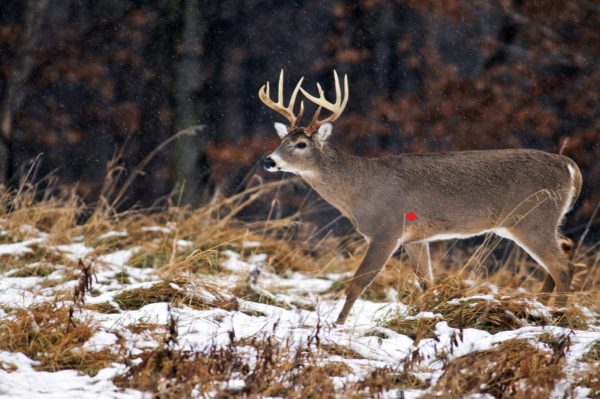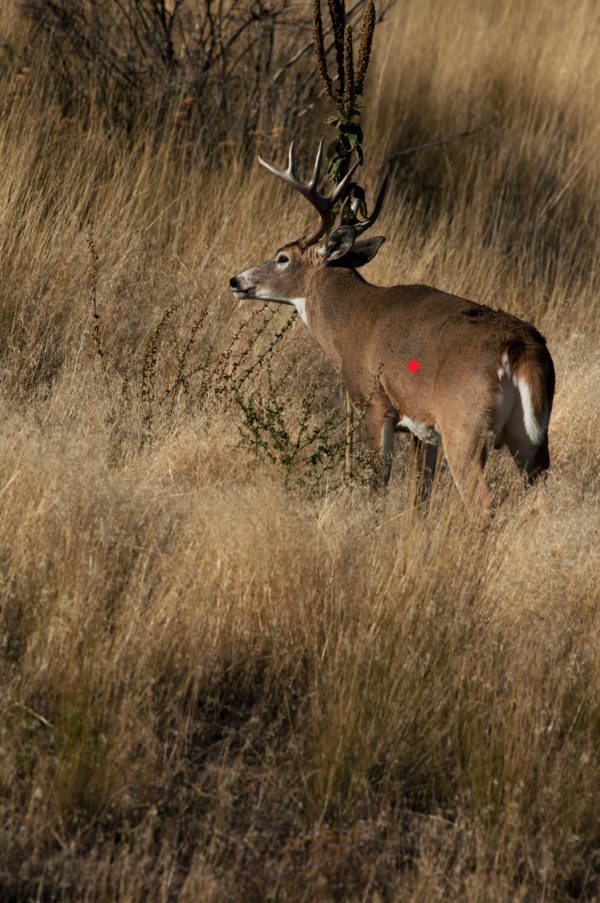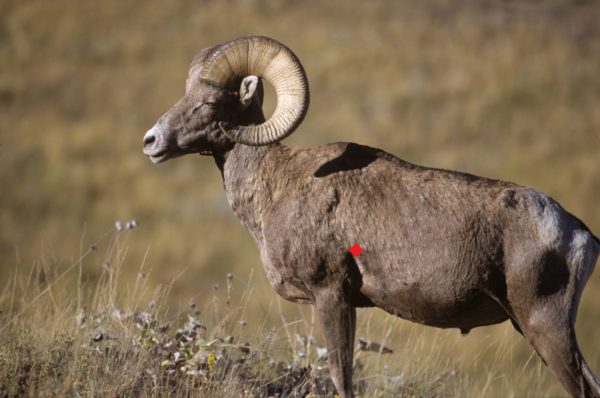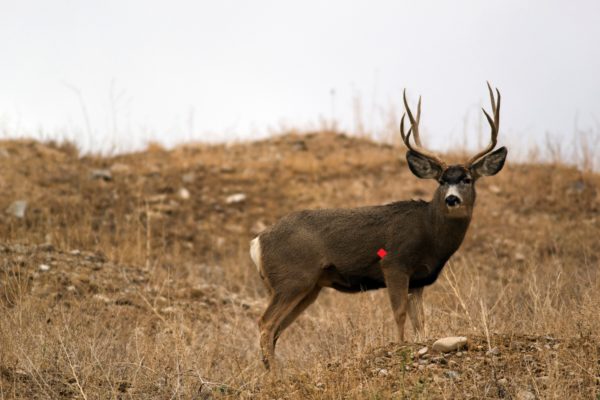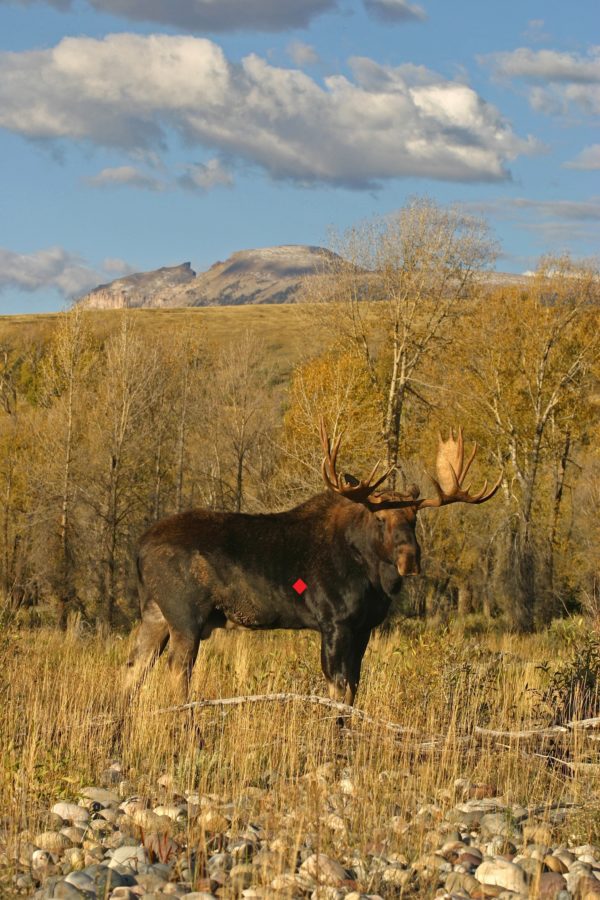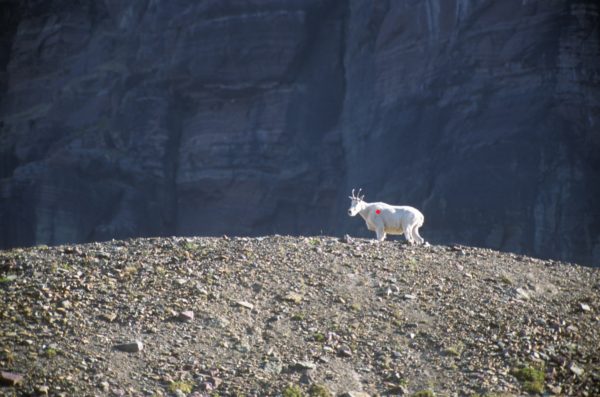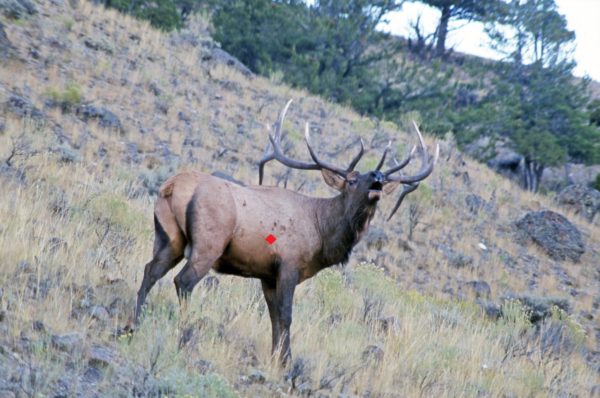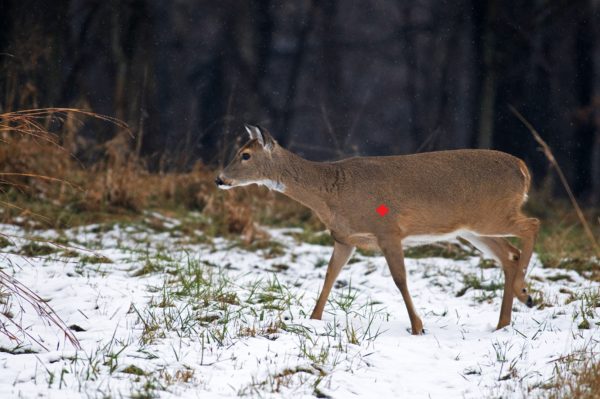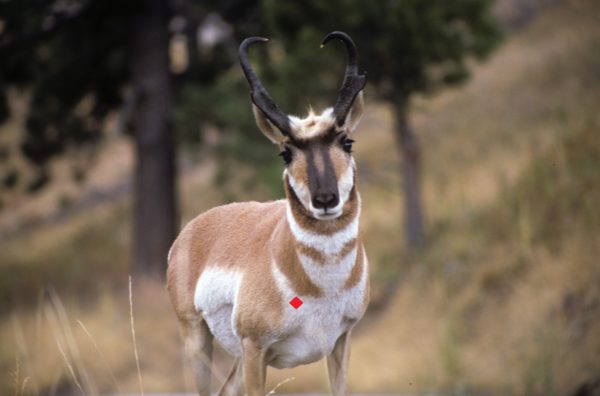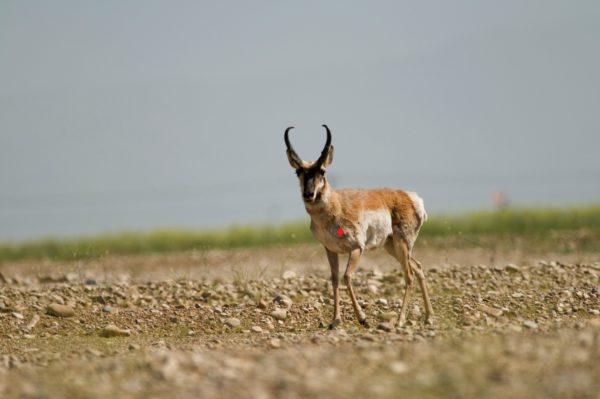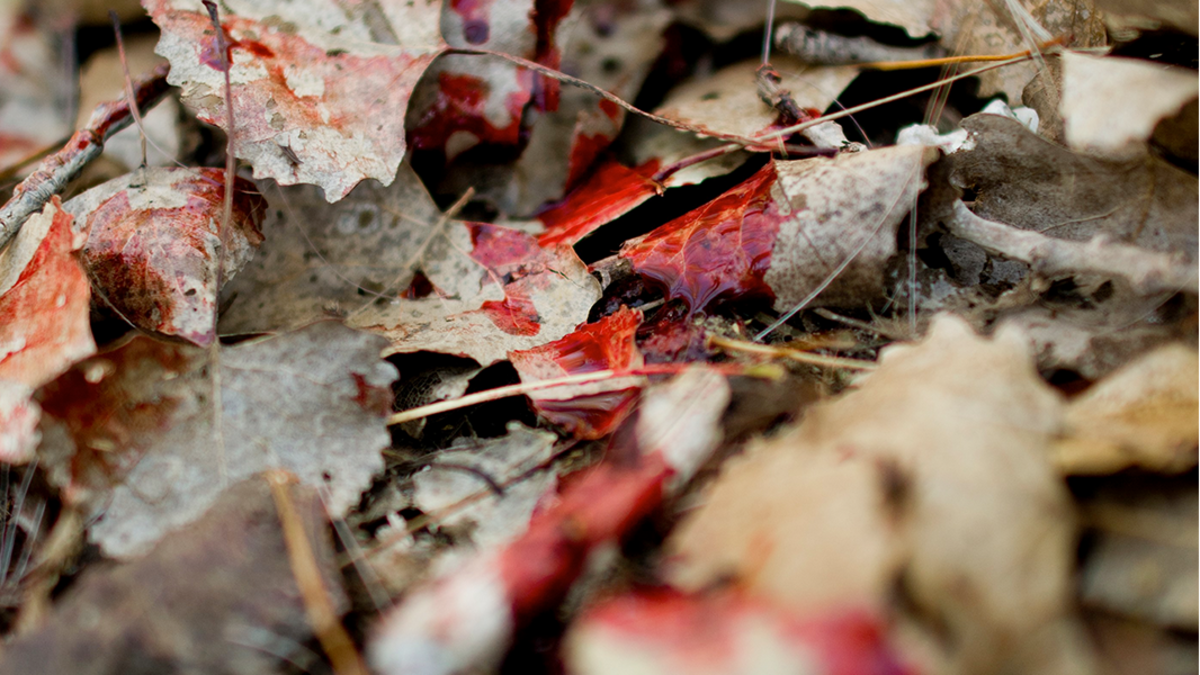
If you have the time, it is always best to let the animal turn and offer a broadside shot. Broadside means the animal is perpendicular to you, facing left or right, not looking at you or away from you. In a broadside situation, a shot placed behind the crease of the shoulder will result in the bullet traveling through both lungs.
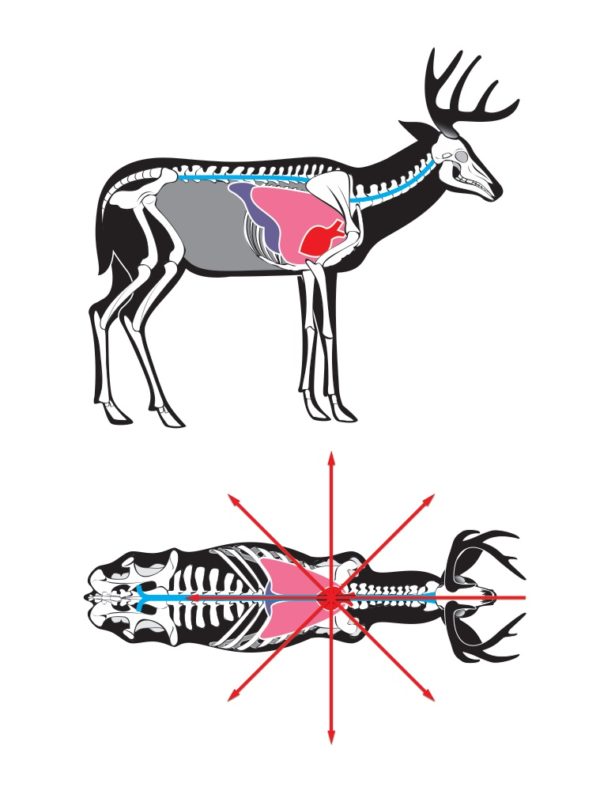
The lungs and heart are your primary target when trying to kill an animal. A hit in the liver can also produce a kill, but it is not quick. Shooting just behind the shoulder hits only minor bones in the ribs, preserving most of the meat. When major bone in the shoulder is struck by a bullet, bone fragments destroy much of the surrounding meat. Quartering shots are also valid, but the meat of one of the shoulders will be jeopardized.
Anchoring the Animal
In some instances, it is necessary to drop the animal in its tracks, also known as “anchoring.” In alpine situations, where steep rock faces and cliffs exist, this might keep the animal from tumbling thousands of feet. Other times, when hunting a small parcel of land, stopping the animal instantly keeps it from jumping onto the neighboring property where retrieval might be difficult.
Dangerous game also requires shot placement that anchors the animal. Bears, known for not bleeding well, are good to try to anchor which will shorten the tracking job.
In a broadside situation, aim square in the center of the shoulder if you want to anchor the animal — imagine you’re hitting it in the center of the scapula. On an elk, for example, your only change in aim is moving the crosshair left or right about a foot, depending on which way the elk is facing.
By shooting the shoulder, you accomplish three things that help in bringing down the animal quickly. One, the shoulder itself is broken, making the animal less mobile. Two, the shock moving through the area disrupts the spine/nervous system. Three, the bullet along with bone fragments from the shoulder travel into and sometimes through both lungs. All this combined usually results in a very fast kill. The one downside to this approach is that a good portion of the shoulder meat can be lost to damage.
